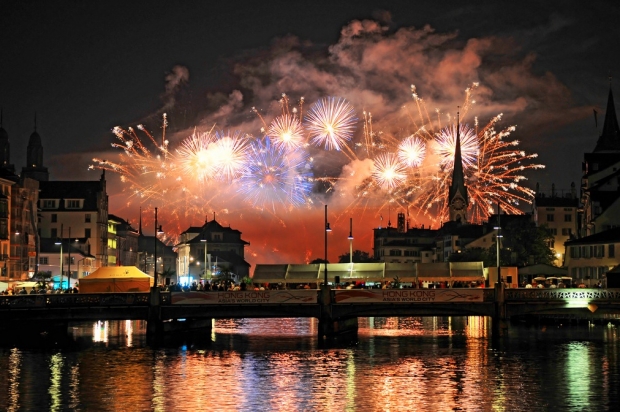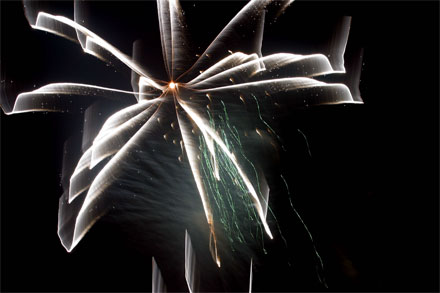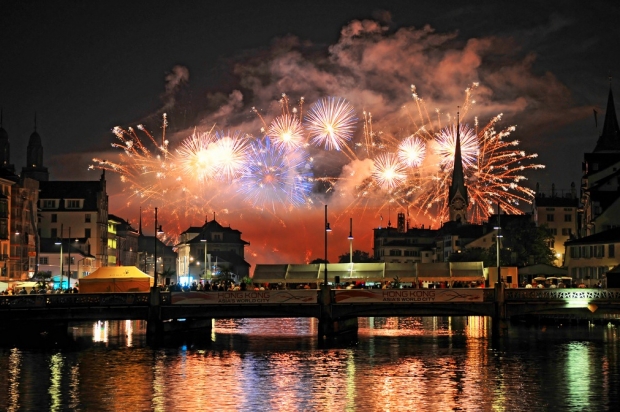
Oh my, it’s nearly That Time Of Year again: burning effigies, sparklers, terrified dogs, and jacket potatoes with charred skins and raw middles. Guy Fawkes' Night is 5 November, so perhaps it’s a good idea to brush up on the ol' fireworks skills in preparation for displays this weekend and next, yes? Indeed…
Rock on…
Many a budding shutterbug has attempted unsuccessfully to photograph fireworks by merely pointing their film camera to the sky and shooting, resulting dark useless prints. With the advent of digital photography, photographing fireworks has become easy, just by following some basic steps…

- Find a location away from the crowd and power lines. An elevated location on a hillside works well. You might want to scout out your perch beforehand: Especially on big fireworks nights (such as July 4th in the US, November 5th in the UK, and new year's eve in most of the world), a lot of the prime photography spots will be taken hours before the fireworks, so plan ahead!
- Set the shutter speed to 1 second or longer. Don’t be afraid of underexposing your photos, though. You won’t.
- Use a low ISO - you want as little digital noise as possible.
- Use a tripod. If you can’t find a tripod use a nice steady base.
- Turn off the flash. This might seem like common sense, but remember you are photographing lights, so you don’t need to add more light yourself.
- Shoot in RAW. You need as much exposure latitude as you can get, in order to be able to do any adjustments you need to do in post-production.
Point your camera toward the sky and shoot. A key to getting a good shot is anticipating when the firework will explode. Initially you will have many hit and miss shots. As the show goes along, you will be able to perfect your timing, and getting better shots as you're learning!
Case study

This fantastic photo is called Fireworks over Zürich, and is (cc) Tambako the Jaguar on Flickr
To get a shot like this, you'll need to use all the above tips, and you'll probably need to shoot in fully manual (although, interestingly, this shot was taken in Aperture priority).
Take a load of test exposures to see what works best; expose for the fireworks (so, use your histogram to determine how your exposures are working out) where possible, and adjust your shooting as you go along. The above photo was taken with an f/3.2 exposure, using a 1/4th of a second shutter speed, and ISO 400, with a -1/3 EV exposure bias. The results are gorgeous, but a slightly longer shutter speed might have made the water look more 'flowing', and could have increased the 'streaks' of the photographs just that little bit extra. Switching the camera to ISO 100 and 1 second shutter speed would have achieved both of these things.
The most important thing to keep in mind is that there aren't any hard-and-fast rules for how to get the best fireworks shots - Experiment and see what works best for your particular lighting scene!
Even more fireworks photography!
Can’t get enough? Well, try the guides, tutorials and tips from Better Photo.com, Garry Black, about.com, calphoto, DPchallenge, and Smithsonian institute!
